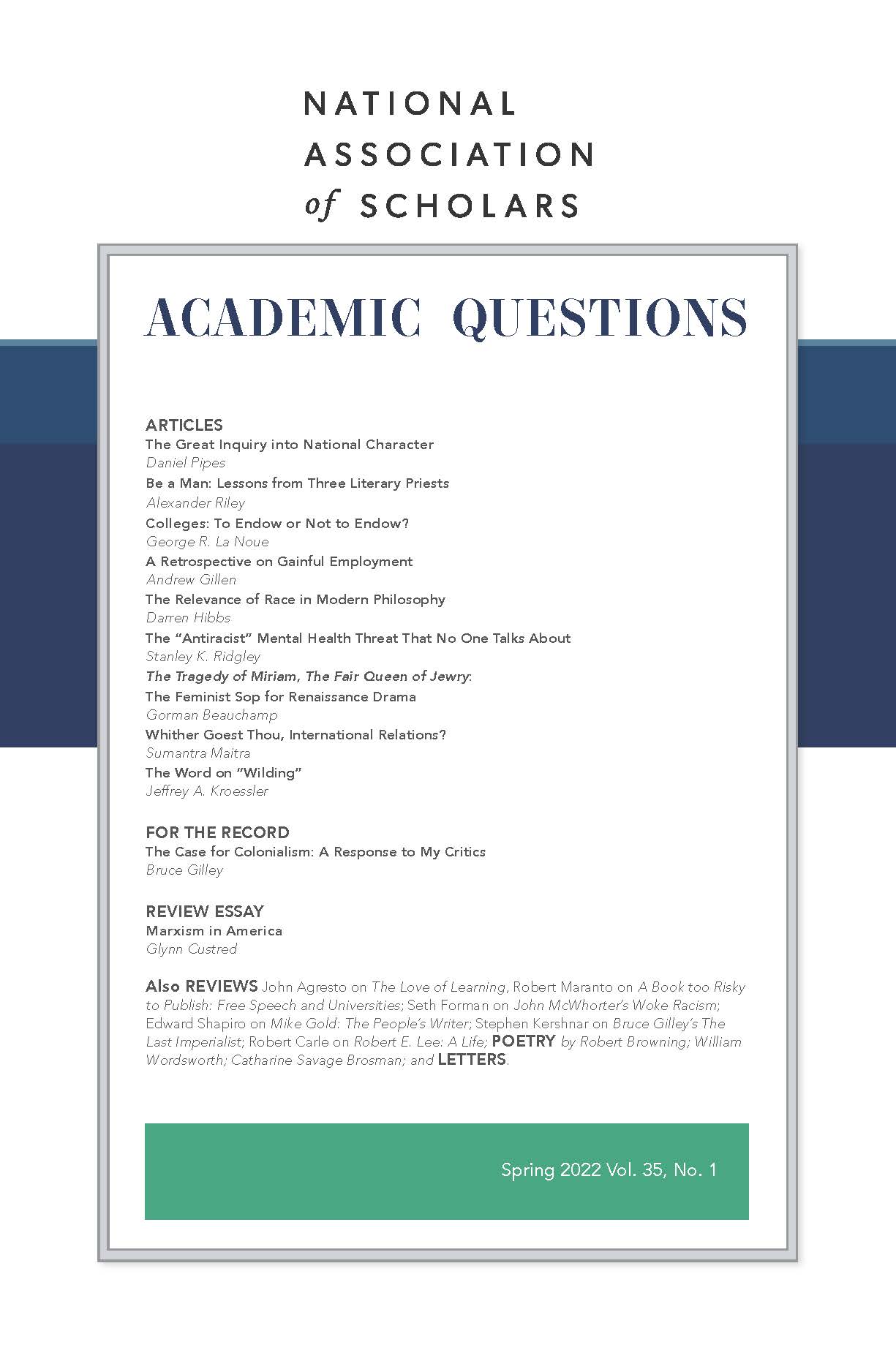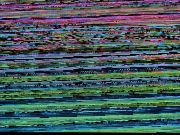The Love of Learning: Seven Dialogues on the Liberal Arts, Margarita Mooney, ed., 2021, Cluny Media, pp. 242, $19.95 paperback.
John Agresto is a former professor of political science and humanities, the retired president of St. John’s College in Santa Fe, and the author of numerous books on politics, law, and the liberal arts. His newest book, The Death of Learning, will be released this summer by Encounter.
These days, wherever we turn in hopes of understanding the meaning, the problems, and the potential of liberal education, we of a more conservative or traditional bent find one of two things: first, either tendentious political tracts conflating liberal learning with liberal/left agendas; or, second, our fellow conservatives dismayed over the latest outrage perpetrated by woke activists and the cancel-culture crowd, or troubled by professors doing whatever they do at “schools of education.” Not that our caterwauling isn’t true. It’s just that, now and then, it really is beneficial to read a book about the value and the promise of liberal education even if it doesn’t pick fights with every contemporary atrocity calling itself Liberal Education.
This, simply, is a book about the love of learning—about the liberal arts and the thirst for knowledge. It consists of a series of conversations with Robert P. George, William Damon, Elizabeth Corey, Timothy P. O’Malley, Carlo Lancellotti, George Harne, and Roosevelt Montás.
It touches with care and intelligence on a number of topics that once shaped the debate in liberal arts circles—is a liberal education primarily “academic” and inward-directed, a matter principally of private edification and delight, or does it serve a wider function, a wider cultural and civic function? Is a liberal education “elitist,” and, if so, in what way and is it justified? How rigid are, or should be, the divisions between the liberal arts and the fine arts, or the liberal arts and more technical, vocational, and professional forms of instruction? How should we understand the connection between the liberal arts and morality? Do the humanities, for example, help make us better people—more just, more compassionate, more humane, perhaps more “human”? What are the problems with connecting liberal education to moral development? Finally, and central to the concern of these dialogues, is the question: can a religious education (in this case, a deeply Catholic education) be liberal? We will soon come back to this concern with the liberal arts and Catholicism since it is both at the core of the book and almost certainly the issue that will turn away most readers, even readers of good will.
But let’s begin with the question of “Why care?” Why be concerned about a species of education that seems so divorced from usefulness or even from modernity? Why care about an education that once offered to make people smarter about things that truly mattered only to be closed to all that truly matters today? Or why defend an antique education of generalists when what is needed today are experts, specialists, people who know how to get things done and done right? Or why admire an education whose emphasis on refinement, character, morality, and justice now seems to be—in the hands of the left—simply the latest cover either for some vapid ideas about moral relativism on one hand or strident ideology on the other? These and other issues plague the liberal arts today, and we should all welcome any attempt to understand better the meaning and real value of that form of education most of us hold dear.
So, this is a book about the differing facets—even conflicting facets—within liberal education itself through a series of conversations with serious and thoughtful practitioners of the liberal arts.
Yes, “a series of conversations.” Not a tract or treatise, not a catechism of beliefs, but seven dialogues on human nature, friendship, beauty, character, the role of religion, moral education, and human flourishing. In other words, it’s a book that seeks to try to understand again the nature of the most serious natural and human things through serious conversation, through an exchange of ideas.
All sides of each argument are apparent in this book. Do the liberal arts make us better people, or do they do something less grand but still immensely important: help us to think and to question in order to make us smarter about things that matter? If the liberal arts are supposed to teach “values,” which values? Perhaps those “universal values that you find all over the world in every culture”? (Damon) Or perhaps values true in themselves, unconnected so directly to “culture?” (I’m reminded of one school principal I knew who happily supported multicultural education because he saw in it the opportunity to teach one truly universal truth—that people everywhere are just the same, “stupid, nasty, and bad.”) On the other hand, might not the more interesting and even more important issue be to seek true answers to moral questions not where different traditions agree but where they disagree?
Since it is a matter of real seriousness, consider for a moment longer the relationship of liberal education and the teaching of morality. One side is perfectly convinced that, properly taught, history will show our students America’s endemic hypocrisy, philosophy will teach “social justice,” and literature, especially literary criticism, will expose our culture’s systemic racism, homophobia, and misogyny. That the left is perfectly content with using the liberal arts as a cover for its own brand of morality and ideology is, to my mind, one reason the liberal arts are dying, and why students interested in serious learning will seek their education in other areas.
But those of us on the other side don’t know what we’re doing, either. Often, we blithely proclaim that reading the Great Books, or studying the classics, or majoring in the “Humanities” will help make us better people, better “humans.”
But is that true? Are we in the liberal arts actually more moral than nurses? Or firemen who risk their lives to save people from gruesome death? Or surgeons? Or even everyday laborers, file clerks, accountants, and owners of delicatessens? Some of the most moral people I ever knew were my grandparents, who not only were unschooled in the humanities, they were illiterate. Besides, while I know that reading Madame Bovary can excite within us feelings of sympathy and concern over the tragic life and death of Emma, let’s not forget that she started down the path of degradation and immorality by reading . . . literature.
What else might we discover in this book? For my money, almost every part of the discussions about “elitism” seems instructive, and presents a decent counterweight to so much loose multicultural talk. Why assume that poor and minority students are interested, first and foremost, in “their own”? How condescending is it to think that someone from a poor family won’t be interested in reading great books? How nasty is it to think that women, minorities, or immigrants have no desire “to overcome the determinations of birth, class, gender and society”? (Montás). (I’m reminded of the late, great Al Shanker of the American Federation of Teachers who told the story of—if I remember right—his first year of teaching. He had one class of quite gifted students and another class of those who were struggling. When he described to the weaker class the texts they would be reading he was confronted by a gruff student who asked, “What are the smart kids reading?” When he replied Shakespeare, English and American poetry, and so on, the student said, “Then we want to read those things, too!” As Shanker told it, they did read the same things. Did they understand everything perfectly? No. Did they draw as much out of it as the smarter students? Probably not. But they got so much more out of these finer readings than they would have gotten by reading lesser works, and as Shanker put it, “Even if you say their cups were smaller, in the end their cups were full.”
Some of the most interesting conversations in The Love of Learning revolve around the idea of beauty. The beautiful, as we all know, sometimes has the power to gobsmack us out of nowhere, and this small volume discusses the meaning and power of beauty repeatedly—the importance of seeing it, of recognizing it, and of being changed by it. This appreciation of beauty is not an end in itself, not art for art’s sake. Indeed, following Keats, the book goes so far as to connect the experience of the beautiful as a means of “coming to know objective truth.” (Mooney). But it might not only be that beauty can lead to truth (which is hard enough a concept for many of us) but that it can, at the highest level, serve “as an opening to the mystery of God.” (Lancellotti)
And here is where I imagine many readers will put the book down in bewilderment. How is it, exactly, that liberal knowledge is connected to “loving God”? (Mooney) If liberal education has to do with reason more than with passion, with questioning more than believing, how deeply are the liberal arts weakened by the notion that “the primary thing” is “to conform our minds to the good that God wills,” to see “in visible things the invisible grace of God.” (Mooney) [my emphasis]
I have no doubt that a decent liberal arts education should take religion and the existence of God seriously, very seriously. But aren’t the aims of a liberal education and a religious education different? Does a liberal education really wish to say of its great books and ideas that these texts, these ideas, are part of our “growing toward union with God”? (O’Malley) Or, speaking of education under the Benedictines, Lancellotti notes with seeming approval, “It’s not that the Benedictines do not value reason, but they do not consider it the highest priority.”
Given such sentiments, I can understand why many might hesitate fully to label The Love of Learning as a defense of liberal education. In the very first chapter Robert George describes liberal education as involving the pursuit of knowledge as an end in itself, not an instrument in the service of this cause or that confession; it is an education that places reason and reflection foremost, without ordering “where this inquiry is going to lead.” In varying degrees, those who follow Prof. George’s discussion take issue with this view, some more some less.
Still, we all know that there are many good and worthy forms of education—professional, technical, civic, and, yes, religious. What is described in this book with grace and intelligence is more of a religious education than a liberal one—but it is a religious education of the highest order and built on the most solid of foundations. And, despite hesitation, in this imperfect world, that’s more than good enough.
Photo by Markus Spiske on Unsplash













